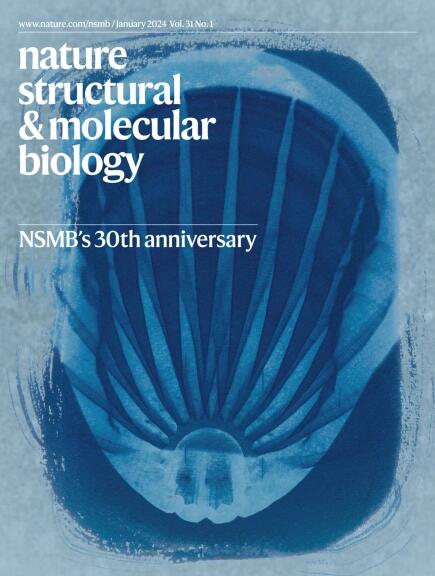Structural elucidation of full-length Pfs48/45 in complex with potent monoclonal antibodies isolated from a naturally exposed individual
IF 10.1
1区 生物学
Q1 BIOCHEMISTRY & MOLECULAR BIOLOGY
引用次数: 0
Abstract
Biomedical interventions that block the transmission of Plasmodium falciparum (Pf) from humans to mosquitoes may be critical for malaria elimination. Pfs48/45, a gamete-surface protein essential for Pf development in the mosquito midgut, is a target of clinical-stage transmission-blocking vaccines and monoclonal antibodies (mAbs) that disrupt Pf transmission to mosquitoes. Antibodies directed to domain 3 of Pfs48/45 have been structurally and functionally described; however, in-depth information about other inhibitory epitopes on Pfs48/45 is currently limited. Here, we present a cryo-electron microscopy structure of full-length Pfs48/45 in complex with potent human mAbs targeting all three domains. Our data indicate that although Pfs48/45 domains 1 and 2 are rigidly coupled, there is substantial conformational flexibility between domains 2 and 3. Characterization of mAbs against domain 1 revealed the presence of a conformational epitope class that is largely conserved across Pf field isolates and is associated with recognition by potent antibodies. Our study provides insights into epitopes across full-length Pfs48/45 and has implications for the design of next-generation malaria interventions. Kucharska, Ivanochko and Hailemariam and colleagues solved cryo-EM structures of Pfs48/45, needed for Plasmodium falciparum development, with potent antibodies. The work revealed conformational epitopes, with implications for design of therapies against malaria.


从自然暴露个体中分离的强效单克隆抗体复合物全长Pfs48/45的结构解析
阻断人类向蚊子传播恶性疟原虫(Pf)的生物医学干预措施可能对消除疟疾至关重要。Pfs48/45是蚊子中肠中Pf发育所必需的配子表面蛋白,是阻断Pf向蚊子传播的临床阶段传播阻断疫苗和单克隆抗体(mab)的靶标。针对Pfs48/45结构域3的抗体已经在结构和功能上进行了描述;然而,关于Pfs48/45上其他抑制表位的深入信息目前有限。在这里,我们展示了Pfs48/45全长复合物的低温电镜结构,该复合物具有针对所有三个结构域的强效人单克隆抗体。我们的数据表明,虽然Pfs48/45结构域1和2是刚性耦合的,但结构域2和3之间存在很大的构象灵活性。针对结构域1的单克隆抗体的鉴定显示存在一个构象表位类,该构象表位类在Pf野分离株中很大程度上是保守的,并且与强效抗体的识别有关。我们的研究提供了对全长Pfs48/45的表位的见解,并对设计下一代疟疾干预措施具有指导意义。
本文章由计算机程序翻译,如有差异,请以英文原文为准。
求助全文
约1分钟内获得全文
求助全文
来源期刊

Nature Structural & Molecular Biology
BIOCHEMISTRY & MOLECULAR BIOLOGY-BIOPHYSICS
CiteScore
22.00
自引率
1.80%
发文量
160
审稿时长
3-8 weeks
期刊介绍:
Nature Structural & Molecular Biology is a comprehensive platform that combines structural and molecular research. Our journal focuses on exploring the functional and mechanistic aspects of biological processes, emphasizing how molecular components collaborate to achieve a particular function. While structural data can shed light on these insights, our publication does not require them as a prerequisite.
 求助内容:
求助内容: 应助结果提醒方式:
应助结果提醒方式:


